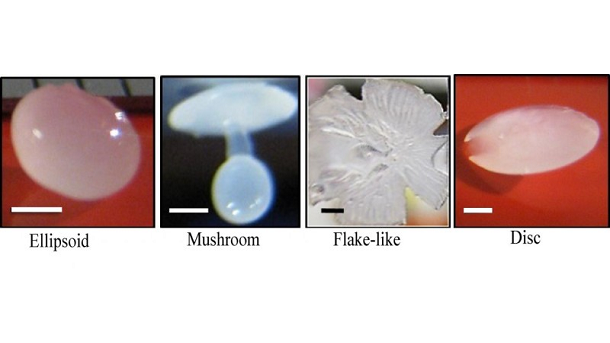Scientists discover low cost method of shaping wax

Wax-based particles in particular with their low melting points are an important ingredient in many personal care and make-up products.
The research carried out by the Micro/Bio/Nanofluidics Unit at the Okinawa Institute of Science and Technology Graduate University (OIST) was published research published in Journal of Colloid and Interface Science, and looks at how to create various non-spherical particles by releasing droplets of molten wax into a cool liquid bath.
OIST Professor Amy Shen explains "People have done studies similar to this in the past using liquid metals impacting solid surfaces, but not other liquids.”
“In terms of the fundamental physics, I believe this research is unique. In terms of applications it's also very important because of how simple and low cost this method is as well as how easily it can be scaled."
The physics behind this research shows how a range of non-spherical shapes can be produced and replicated with many possible industrial applications.
By forming molten liquid drops and releasing them into a bath of cooler liquid to solidify them, the team created a single non-spherical particle shape by a combination of several variables acting on it from the moment of impact.
Research
Professor Shen explains that the physics behind the creation of different particle shapes through the use of impact and solidification between a molten liquid, in this case wax, and a cooler liquid medium were not entirely understood when this research began.
In order to explore what shapes were possible; the team took many different variables into account, such as the temperature of the wax, temperature of the liquid bath, density and viscosity of the liquid bath, and the impact speed of the molten liquid drop.
By balancing these different variables with competing time scales, four shapes presented themselves throughout the research: Ellipsoid, Mushroom, Flake-like, and Disc.
In addition to the use of high speed image analysis, a simplified heat transfer model was used to estimate the time it takes for an individual molten wax drop to solidify after making contact with the cooling liquid bath.
The resulting data allows for these four types of non-spherical shapes to be reliably reproduced and lays the groundwork for other types of particles to be created using similar methods.
_____
Shilpa N. Beesabathuni, Seth E. Lindberg, Marco Caggioni, Chris Wesner, Amy Q. Shen. Getting in shape: Molten wax drop deformation and solidification at an immiscible liquid interface. Journal of Colloid and Interface Science, 2015; 445: 231 DOI: 10.1016/j.jcis.2014.12.089

















